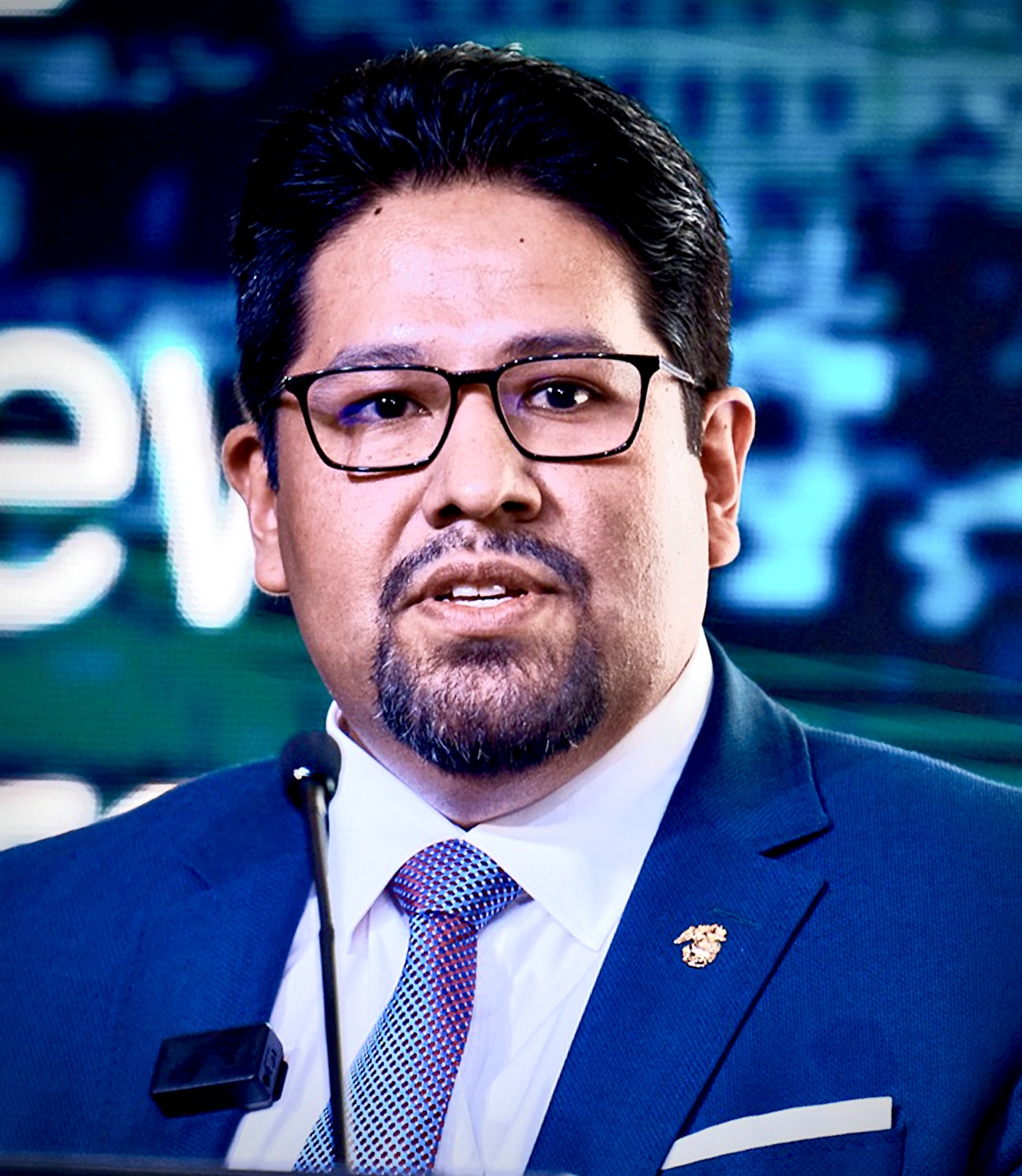Joseph Humire testifies in a hearing by Canada’s House of Commons Standing Committee on Citizenship and Immigration on “Standing on Guard for Thee: Ensuring that Canada’s Immigration System is Secure” held on Tuesday, February 28, 2012.
Thank you, Mr. Chairman. Thank you, Honorable members of the committee. My name is Joseph Humire. I am the Director of the Center for a Secure Free Society, which focuses on researching the nexus between security, defense, and economic freedom. I very much appreciate the invitation to appear before you today and regret that I cannot be there in person, but thanks to the efficiency of your staff, l’m able to present my testimony via teleconference.
As l’m not a citizen of Canada, but rather am a citizen of the United States, I would like to focus my testimony on an issue that’s pertinent to both our countries, that of border security. More specifically, I’ll offer my recommendations by addressing two challenges that I believe need to be addressed to improve the security of Canada’s immigration system.
The first challenge, although a bit holistic, is to employ methods and measures to evaluate security policies, which in this case are immigration security policies. The reason is to ensure that Canada’s immigration system is secure yet does not irreversibly compromise the rights and liberty of your citizens.
The second challenge is a bit more practical. Canada must establish an enhanced intelligence and law enforcement infrastructure that addresses real-time immigration threats while it does not give up the sovereignty of the state. As you can see, both challenges require a delicate balancing act. Thus, l’d like to begin by quoting one of our founders of the United States, the honorable Benjamin Franklin, who wrote, in his notes for a speech to the Pennsylvania assembly, “Those who would give up essential liberty to [obtain] temporary safety deserve neither”. While a bit grim, Mr. Franklin captured, in essence, the premise of what needs to be understood when discussing the issue of immigration security, which is that there is a natural trade-off between security and liberty—between security and freedom—particularly as it relates to defending sovereign borders. Thankfully, this trade-off is not made on absolute terms. The desired state is not absolute security, nor is it absolute freedom. Rather, there is a balancing act between the two that allows this trade-off to be made at the marginal level and to adjust, depending on the threat conditions present at the time. Finding this balance is the primary challenge to the Canadian government when trying to improve the security of your immigration system.
This balancing act needs to ensure that Canadian citizens are safe from all, or at least most, conventional and unconventional threats, while the guaranteed freedoms and liberty of your citizens, freedoms that are needed to ensure prosperity, are not violated. Finding this balance, or what I like to call the sweet spot, is the key to success for Canada’s immigration policy.
To offer some recommendations on how to reach this sweet spot, I’ll borrow from another Philadelphia scholar, Mr. Jan Ting, who was the former Assistant Commissioner to the United States Immigration and Naturalization Service. In a 2008 publication by Canada’s own Fraser Institute, Mr. Ting stated that the government should take five considerations when evaluating security policies. The first he calls historical precedent, which basically means examining what has been done in the past and seeing whether it was justifiable.
The second is revocability of the policy. It means essentially understanding when the policy has failed so that it can be withdrawn or amended to adjust to lessons learned.
The third is context, which recognizes that some policies and some initiatives may be justified in one context but not in another.
The fourth, nature of the threat, is frankly to basically understand, to the best of our ability, the actual nature of the threat.
The fifth and final is the likelihood of success. Be forthright about what works in terms of applying our moral and ethical sensibilities to the struggle to defend our nation.
In addition, Ting would add that these evaluation measures should be complemented by judicial scrutiny and congressional, or in this case parliamentary, oversight so as to ensure that all three branches of government are working in sync and within the checks and balances system. To this I would add that security policies—in this context immigration security policies—need a comprehensive review to ensure that they are synchronized with the whole-of-government approach to immigration that aims to achieve this delicate balance between security and liberty. I would also add that immigration security policies should be scrutinized not just by governmental actors but by non-governmental actors, namely think tanks, watchdog groups, and other elements of civil society. Mr. Chairman, it’s in both of our interests that our borders be secure. However, in doing so, we must not damage what is at the core of our shared interests, which is trade and commerce. I believe that the Canadian government should be commended in this regard, as they have taken this shared interest of trade and commerce into account with just about all of the immigration security initiatives proposed in the last decade, starting with the Smart Border declaration of 2001 up to the Beyond the Border initiative of 2011 that continues to the present day. Both of these, and all other immigration security initiatives, must undergo a comprehensive review that includes the five aforementioned considerations to ensure that they’re up to date with present threat conditions. If we accomplish this, it would address the first challenge of adopting an immigration system that is secure, yet does not impede trade, commerce, or, more importantly, the individual liberty of Canadian citizens.
However, evaluation measures alone are not enough. In order to further modernize the security of Canada’s immigration system, you must also examine how current immigration security policies, namely those related to border security, have kept up with the evolution of trade and commerce between our two countries.
Mr. Chairman, as you well know, Canada and the United States enjoy the largest two-way economic relationship in the world, with total merchandise trade in exports and imports exceeding $500 billion annually. In fact, about $1.3 billion in goods comes across the border every day. But what’s interesting to note is that a little less than half of that trade coming across every day—give or take $500 million—takes place between elements of the same company, meaning that companies residing on both sides of the border move parts and labour to one country or the other depending on the availability of expertise and capacity. These transnational companies show that the U.S. and Canada not only share interests, but we also share capacity, as we are increasingly integrating our structure of production. The increased level of integration transcends the old ways of thinking about trade and commerce. It means that we need to transcend the way we think about protecting this trade and commerce, as well as our citizens, when addressing the real-time threats faced by both our nations. Both the Office of the Director of National Intelligence of the United States and your Canadian Security and Intelligence Service have stated that radical Islamic extremism and terrorism are the greatest threat to our respective national security. I myself have studied Islamic extremism and terrorist groups for over a decade, both in the military and within think tanks, and I can assure you that traditional border security initiatives and improved technology alone will not stop these groups.
These groups operate in networks, and in order to counteract the threats, the security apparatus of Canada must have its own international networks that can locate, identify, and neutralize the threat. As you well know, an immigration control network has three layers of defence: the first is overseas, where visas are issued abroad amongst your embassies and consulates; the second is in the interior of a country; and the third is at the border. Enhancing border security in the traditional sense would entail placing more controls at the air, sea, and land ports, as well as along long stretches in between.
However, I will assert the position that cumbersome border controls undermine our shared interest in achieving higher levels of prosperity while actually doing very little to curb real-time security threats, such as Islamic extremism and terrorism. Pre-entry screening, intelligence cooperation, and enhanced law enforcement are all likely to yield better results in keeping terrorists, criminals, and other undesirables out of a country than are heavy-handed immigration controls at the border.
To put this in perspective, James Ziglar, former Commissioner of the U.S. INS, testified several years ago that in one typical six-month period, about 4,000 criminal aliens were arrested at the Canadian border. Since this is 4,000 among more than a million—I think the exact quotation was about 0.0004%—it is a small fraction of cross-border activity. Since the criminal element is such a small fraction of what actually comes across the border, I don’t believe this is where limited resources should be focused when looking to enhance the security of your immigration system.
This leads to my recommendation for the issue of border security, which is to enhance the intelligence and law enforcement infrastructure of Canada for what some experts have called domain awareness and to implement additional prescreening processes. In this instance, less is more. As articulated by Canada’s Interim Auditor General, John Wiersema, the Canadian customs and immigration system does not have the necessary intelligence infrastructure to make sound decisions, particularly on people requesting immigration. This lack of intelligence is a result of both a failure of various intelligence services to provide necessary information to customs and immigration authorities in Canada as well as a failure of Canada to obtain valuable intelligence and analysis from its international partners, particularly the “five eyes” of Canada, the United States, Great Britain, Australia, and New Zealand, who have been cooperating for the last 60 years on intelligence-sharing and information.
Therefore, within the immigration control network, I believe more emphasis should be placed on the first two layers of defense, which is overseas within your embassies and within the interior of Canada, which is where the threat of Islamic extremism and terror originates and also is propagated. For instance, from an aviation and maritime perspective, Canada needs to know about air travel passengers departing from Geneva before the plane leaves Geneva, not when it arrives in Montreal. Canada needs to know about ships approaching its coastal domain, not when they arrive at the dock but well before these ships even enter international waters. The truth is that at present, little prescreening is done and there is an over-reliance on technology, something that is both dangerous and that risks an increase in complacent behavior. A proper prescreening process requires more than just advanced technology, such as biometrics; it also requires capable networks of intelligence professionals who are collecting, processing, and analyzing information abroad that provide the data for biometrics to be effectively employed.
The best biometric technology in the world is rendered useless if there is no information on the exact individual. Fingerprinting becomes meaningless if there is nothing to cross-reference against. Intrusive physical technologies provide little, other than unnecessary travel delay and frustration. Snippets of data mean nothing until they are collated between domestic international partners so that the information can be turned into intelligence.
Mr. Chairman, let me wrap up my summary by saying that my recommendations are as follows:
The first, as was stated, is to adopt evaluation measures that consist of the five factors mentioned earlier on all immigration security policies, past and present, which would move towards a more accurate balance between liberty and security.
The second is to enhance Canada’s intelligence and law enforcement infrastructure to allow for increased presence and activity of human elements abroad, focusing on pre-screening procedures and collaboration with foreign intelligence apparatus.
The third is to identify employed non-governmental Canadian individuals in institutions to help in drafting immigration security policies. The last is to establish a new joint committee in Parliament that includes Citizenship and Immigration, International Trade, and National Defence.
With that, Mr. Chairman, I will end my opening statement. I’m pleased to answer any questions you may have. Thank you for your time.


 Joseph M. Humire
Joseph M. Humire